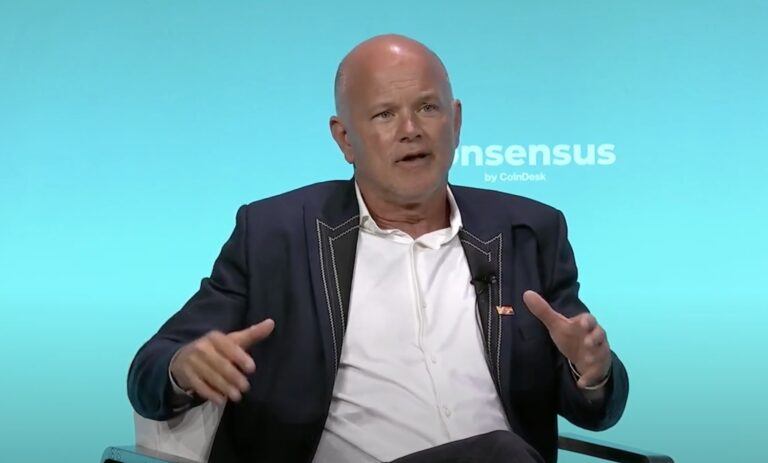Regulation
Galaxy Digital CEO Talks Crypto’s Bipartisan Potential

In conversation with CNBC correspondent MacKenzie Sigalos at the recent Consensus 2024 conference (held May 29-31, 2024 in Auston, Texas) Mike Novogratz, CEO of Galaxy Digital, shared his thoughts on the evolving institutional crypto landscape, political changes affecting the industry, and the future of digital assets .
Seismic Shifts in Crypto Policy
Novogratz highlighted the recent political upheavals that have significantly influenced the crypto market. It highlighted a pivotal moment when the White House announced President Biden’s intention to veto the rescission of SAB 121, an obscure accounting rule filed by the SEC. This action provoked a political reaction, particularly on the Republican side, with figures like Donald Trump positioning themselves as pro-crypto. Novogratz pointed out that this decision mobilized the crypto community, making it a powerful political force. He pointed out that there are now more cryptocurrency owners in America than dog owners, many of whom are single-issue voters.
Bipartisan support and the future of regulation
Novogratz says the political dynamic around crypto is shifting toward a more bipartisan approach. Novogratz mentioned that prominent Democratic figures, such as Senators Schumer and Torres, have begun to support crypto-friendly legislation, recognizing the large voting base. This bipartisan support was exemplified by the passage of FIT 21 in the House, which aims to bring regulatory clarity to the market.
Novogratz believes that the Market Infrastructure Bill and the rollback of restrictive accounting rules are crucial for the integration of traditional financial institutions into the crypto space. He anticipates that these changes will allow major custodians like Bank of New York and State Street to begin holding crypto assets, paving the way for broader institutional adoption.
The impact of institutional participation
The conversation also touched on the current state and potential future of spot Bitcoin and spot Ether ETFs. Despite regulatory hurdles, Novogratz is optimistic about institutional adoption of these products. He explained that institutions are slowly getting used to the idea of crypto, largely driven by customer demand. He stressed, however, that regulatory clarity is essential for the full participation of large financial entities like Goldman Sachs and Morgan Stanley.
Novogratz emphasized that while current institutional involvement in crypto is still in its early stages, the potential for growth is immense. He predicts a significant influx of institutional investment once regulatory uncertainties are resolved.
The role of crypto in the broader economic context
Novogratz provided a macroeconomic perspective, linking the resilience of the crypto market to broader economic trends. He pointed out that despite the Federal Reserve’s hawkish stance and the lack of expected rate cuts, the crypto market has remained strong. This resilience, according to Novogratz, is due to the continued fiscal irresponsibility of the US government and the growing appeal of Bitcoin as a hedge against inflation and currency devaluation.
Strategic direction of Galaxy Digital
Discussing Galaxy Digital, Novogratz outlined the company’s future plans, with an emphasis on a move toward on-chain initiatives. He acknowledged the challenges posed by the current regulatory environment, but expressed confidence in the eventual resolution of these issues. He also discussed Galaxy’s involvement in the liquidation of FTX assets, praising the effectiveness of the American bankruptcy system in resolving the crisis and returning value to creditors.
Tokenization and the future of finance
One of the most forward-thinking aspects of Novogratz’s talk was his discussion of tokenization. He believes that asset tokenization is a game-changer and will slowly gain momentum before quickly transforming the financial landscape. Novogratz noted that large financial institutions are already preparing for this change by investing in the necessary infrastructure.
